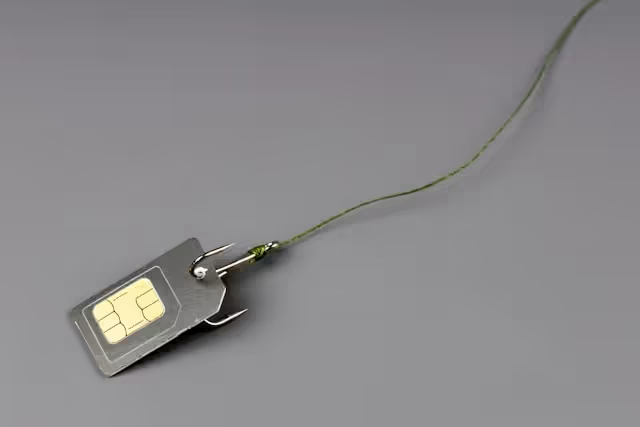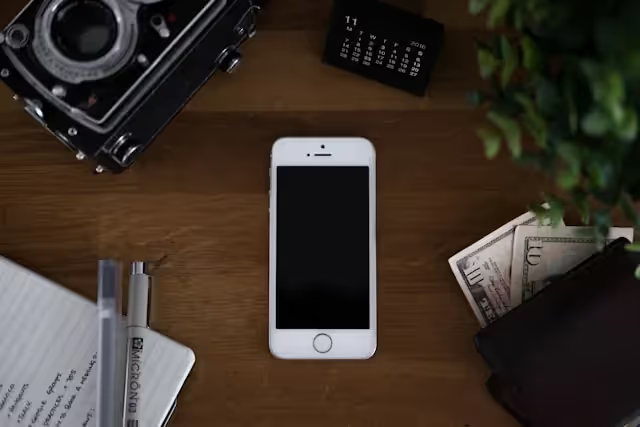How to Actually Save Money on Your Phone Bill This Year
How to Actually Save Money on Your Phone Bill This Year

I switched phone plans last month and saved $840 a year. No joke. After years of paying whatever my carrier asked, I finally sat down and figured out what I actually needed versus what I was paying for. The difference was shocking.
If you're like most Americans, you're probably overpaying for your cell phone service. Maybe you signed up for a plan years ago and never looked back. Or perhaps you got sweet-talked into an "amazing" deal that turned out to be not so amazing once the promotional period ended. Whatever brought you here, you're ready to find better phone plan deals, and I'm going to show you exactly how to do it.
Here's the thing: carriers know most people won't dig deep into the details. They count on it. But you're different. You're here because you want to make an informed decision, save money, and avoid buyer's remorse. This guide cuts through the marketing noise to help you find exactly what you need.
Why Phone Plan Shopping Has Become So Complicated
Remember when choosing a phone plan meant picking between a few simple options? Those days are long gone. Now? Good luck making sense of it all. You've got Verizon, AT&T, and T-Mobile battling it out with their main brands while simultaneously running cheaper services under different names. Cricket, Metro, Visible - half the time people don't even realize these are owned by the big guys. Trying to compare them all is enough to make your head spin. I literally spent three hours last week with two browser tabs open, a calculator, and a notebook trying to figure out which plan would actually cost less after all the fees and gotchas.
And don't get me started on 5G. Every carrier acts like their 5G is God's gift to smartphones, but here's what they won't tell you: in my neighborhood, Verizon's "nationwide 5G" is slower than their old 4G network. My buddy lives ten miles away and gets blazing fast speeds with T-Mobile. It's a total crapshoot. Plus, now that everyone's working from home at least part-time, that hotspot data you never thought about? Suddenly it's the most important feature when your home internet craps out during a Zoom call.
The phone financing game has completely changed too. Remember getting a new iPhone for $199 with a two-year contract? Yeah, me too. Now they'll "give" you $1,000 off, but only if you trade in a phone worth $800 and stay with them for three years. Do the math on those monthly credits and you'll see why I started buying my phones directly from Apple.
Understanding Your Real Needs (Not What Carriers Tell You to Want)
Before diving into specific deals, let's talk about what actually matters. Carriers love to push unlimited plans, but here's a secret: most Americans use less than 10GB of mobile data per month. If you're primarily on Wi-Fi at home and work, paying for unlimited data might be like buying a sports car to sit in traffic.
Start by checking your current usage. Pull up your last three bills and look at:
- How much data you actually use (not your plan limit)
- Number of calls you make
- Text message volume
- International usage patterns
- Hotspot needs
This baseline helps you avoid overpaying for features you'll never use. A family of four might save $100 monthly by choosing a shared 20GB plan over unlimited, especially if everyone connects to Wi-Fi regularly.
Coverage is everything. Trust me on this. I learned the hard way when I moved to a new apartment and discovered my supposedly "nationwide" coverage couldn't penetrate my bedroom walls. Those coverage maps the carriers show you? They're about as accurate as weather forecasts two weeks out. My neighbor across the hall gets perfect reception with AT&T while I'm over here holding my phone against the window like it's 2005. Do yourself a favor—before you switch to any carrier, ask around. The guy at the coffee shop, your coworkers, that chatty person at the gym. Real people in your actual area will tell you what works and what doesn't.
The Big Three vs. Everyone Else
Okay, so here's how the cell phone world actually works. You've got three companies that own all the towers: Verizon, AT&T, and T-Mobile. Then you've got dozens of smaller companies that basically rent space on those same towers. These renters (the industry calls them MVNOs, but whatever) include brands like Mint Mobile, Cricket, Visible, and a bunch of others you've probably seen advertised on YouTube.
It's kind of like flying first class versus coach on the same plane. You're going to the same place, using the same equipment, but the experience is different. The big carriers give their direct customers the VIP treatment. When towers get crowded—think concerts, sporting events, or just rush hour in a busy city—they get first dibs on the bandwidth. Everyone else waits in line.
I've used both, and here's my honest take. When I had Verizon, I never thought about my service. It just worked. Bills were high, but I could walk into a store when I had problems, and my data was fast everywhere. Then I switched to Mint Mobile to save money. My bill dropped from $85 to $30, which was amazing. But at a football game last fall, my phone basically became a brick. Everyone around me was posting Instagram stories while I couldn't even load Google.
What These Plans Actually Cost (and What You Really Get)

Prices in this industry are like airline tickets—nobody pays the same amount, and the advertised price is never what you actually pay. But I've done the digging, so let me break down what you're really looking at.
If you're flying solo on a phone plan, brace yourself. Individual plans are where carriers make their money. Verizon wants about $70 a month for their basic unlimited plan. But wait—that's only if you sign up for autopay with a debit card (not credit, because they're picky like that). Miss that detail and you're paying $80. AT&T and T-Mobile play the same games with similar pricing.
Here's something I noticed when I was comparing plans last month. The basic unlimited plans are kind of a trap. Spend an extra $10-15 for the middle tier and you suddenly get stuff that's actually useful. T-Mobile throws in Netflix. AT&T includes HBO Max. Verizon has some Disney bundle thing going on. The extra cost over Essentials gets you higher-priority data, more hotspot allowance, and Netflix Basic included. If you're already paying for Netflix, the math becomes compelling. AT&T bundles HBO Max with certain plans, while Verizon includes Disney+, Hulu, and ESPN+.
But don't overlook smaller players. Visible, owned by Verizon, offers unlimited everything for a flat $40 (or $25 with their Party Pay feature). The catch? Customer service is entirely digital, and data speeds can slow during congestion. For budget-conscious users comfortable with self-service, it's hard to beat.
Family Plan Mathematics
Family plans showcase the wireless industry's volume discount model. Adding lines typically costs far less than individual plans—sometimes as little as $20-30 per additional line. A family of four might pay $160 total for unlimited service that would cost $280 as separate accounts.
The key is defining "family" flexibly. Carriers don't verify relationships, so roommates, extended family, or trusted friends can share plans. Some groups use apps like Venmo to split bills automatically, turning family plans into de facto group buying programs.
T-Mobile's Magenta Max plan illustrates the potential. Four lines cost $200 total, including taxes and fees. Each line gets truly unlimited premium data, 40GB of high-speed hotspot, and Netflix Standard. Split four ways, that's $50 per person for premium service.
Senior and Specialty Discounts
Carriers increasingly court specific demographics with targeted deals. Senior plans typically require only one account holder over 55, making them accessible to couples with age gaps. T-Mobile's 55+ plans knock $50 off comparable regular plans. Verizon and AT&T offer similar programs with varying eligibility requirements.
My brother-in-law is military, and his phone bill makes me jealous. We're talking $25 per line for stuff I pay $70 for. But here's what blew my mind—it's not just the military discount everyone knows about. He got access to some special military-only plan that doesn't even show up on T-Mobile's website. You literally have to ask for it in store and show your ID.
Same thing happened when my wife's cousin became a firefighter. She mentioned it while setting up her new phone, and boom—25% off plus extra hotspot data. The sales guy told her they have similar deals for nurses, EMTs, teachers, pretty much anyone who serves the community. But get this—they don't advertise these anywhere. It's like a secret menu at In-N-Out. You have to know to ask.
College students are cleaning up too these days. My nephew just started freshman year and scored six months of free Paramount+ plus 100GB of hotspot data from Verizon. Apparently they roll out new student deals every August when everyone's going back to school. His roommate missed out because he signed up in October. Timing is everything.
Let's Talk About Those "Free" Phone Deals
I'm going to save you from making the mistake I made three years ago. You know those ads screaming about free iPhones? Free Samsung Galaxies? Here's what they don't mention in the commercial: that "free" phone is actually a 36-month payment plan where they give you credits each month. It's like saying your mortgage is free because your employer pays your salary.
Here's how it actually works. Say the new iPhone costs $1,000. They'll give you $27.78 in credits every month for 36 months. Sounds great until you realize you're handcuffed to that carrier for three full years. Want to switch after a year because their service sucks? Surprise! You owe them $666 for that "free" phone. I learned this the expensive way when I tried to jump from AT&T to T-Mobile after eight months.
But okay, I'll admit it—sometimes these deals actually make sense. When the iPhone 15 came out, I traded in my beat-up iPhone 12 that maybe would've gotten $200 on Facebook Marketplace. Verizon gave me $800 in credits for it. Even locked in for two years, that math works. The trick is only doing it when you're already happy with your carrier and planning to stick around anyway. The key is timing and flexibility. If your current phone works fine, waiting for promotional periods yields better deals than upgrading out of cycle.
Consider this common scenario: T-Mobile offers $800 off iPhone 15 with eligible trade-in. Your iPhone 12 might fetch $300 selling privately, but the $800 credit (spread over 24 months) effectively pays for most of the new device. The catch? You're committed to T-Mobile for two years. If you're happy with their service, it's worthwhile. If you're considering switching, it's a golden handcuff.
Manufacturer direct sales increasingly compete with carrier deals. Apple's iPhone Upgrade Program, Samsung's financing, and Google's Fi device offers sometimes beat carrier promotions, especially when combined with cash-back credit cards or seasonal sales.
Alternative Approaches Worth Considering
Prepaid Plans: Not Your Grandmother's TracFone
Remember when prepaid meant those sketchy phones from the gas station? My how things have changed. I switched my teenage daughter to AT&T Prepaid last year, and honestly? It's better than my postpaid plan in some ways. She gets 16GB of data for $25 a month (when you pay for the year upfront), and the best part—when she uses it all up, the data just slows down. No overage charges, no panic attacks when the bill comes.
The annual payment thing scared me at first. Dropping $300 in one shot felt weird. But think about it—that's less than what most of us spend on coffee in three months. And here's what nobody tells you about prepaid: the customer service is actually better. Why? Because they want to keep you. When you can leave anytime without penalties, companies suddenly remember how to treat customers right.
Mint Mobile turned the prepaid world upside down with their bulk buying approach. My coworker has been using them for two years and won't shut up about it. He paid $180 upfront for an entire year of service. That's $15 a month for 4GB of data. When I told him about my $85 Verizon bill, he literally laughed out loud. The catch? You need decent T-Mobile coverage in your area, and you better be comfortable managing everything through an app.
The eSIM Revolution Nobody's Talking About
This is going to sound super nerdy, but eSIMs might be the best thing to happen to phone plans in years. If your phone was made in the last couple of years, it probably supports eSIM, and you're missing out if you're not using it.
Here's what I do now, and it's saved me hundreds. I keep a cheap Visible plan as my primary number—$25 a month for unlimited everything on Verizon's network. Then I added a second eSIM from US Mobile that I only activate when I travel to areas where Verizon sucks. It costs me $10 to activate it for a month when I need it. Two carriers, total flexibility, less than $35 most months.
My buddy who travels internationally has this down to a science. He keeps his US number on a physical SIM and adds local eSIMs wherever he goes. Last month in Portugal, he got 20GB of data for €15 instead of paying Verizon $10 per day for international roaming. That's $280 saved on a two-week trip.
Business Plans That Aren't Actually for Businesses
Here's a little secret the carriers don't advertise: you don't need an actual business to get a business plan. I'm a freelance writer, which technically makes me a business owner. But my neighbor signed up for a T-Mobile business plan using his eBay seller account. Another friend used her Etsy shop. As long as you have any kind of tax ID or even just a "doing business as" name, you're golden.
Why bother? Business plans often cost the same or less than consumer plans but come with actual perks. I get truly unlimited hotspot data (not the 40GB cap on consumer plans), priority customer service with American-based reps, and international features that would cost extra otherwise. Plus, the whole bill becomes a tax write-off. My accountant loves it.
The application process is stupidly easy. I filled out an online form, uploaded a picture of my business license (which cost $50 from my city), and had service activated the next day. No credit check, no contracts, just better service for less money.
Real-World Scenarios and Recommendations
Let's apply this knowledge to common situations:
The Budget-Conscious Student
Sarah needs reliable service for campus life but watches every penny. Recommendation: Mint Mobile's 10GB plan paid annually ($20/month) paired with a previous-generation iPhone SE purchased refurbished. Total monthly cost under $35 including device financing.
The Remote Working Family
The Johnsons work from home but travel frequently. Two adults and two teens need reliable data everywhere. Recommendation: T-Mobile Magenta Max family plan with four lines ($200/month) provides unlimited premium data and generous hotspot allowances. Their work-from-anywhere lifestyle justifies the premium.
The Senior Couple
Robert and Linda use phones primarily for calls and occasional web browsing. Recommendation: T-Mobile 55+ Essentials plan for two lines ($55/month total) offers more than enough data with the simplicity they prefer.
The International Business Traveler
Marcus flies internationally monthly for work. Recommendation: Google Fi's Simply Unlimited plan ($50/month) with seamless international data in 200+ countries. No more fumbling with tiny SIM cards at airport kiosks or getting hit with those insane $500 roaming bills.
The Stuff They Hope You Won't Notice
Want to know why I started keeping a spreadsheet of my phone bills? Because that $65 plan they advertise somehow turned into $84.73 every month. It's actually insulting how they do this. They'll plaster "$65 UNLIMITED!" everywhere, then tack on $8 in taxes, $4.50 in "regulatory recovery fees" (which sounds official but is totally made up), another $2 for 911 services, and before you know it, you're paying almost $20 extra.
Oh, and activation fees? What a scam. They literally type your name into a computer and charge you $45 for the privilege. I watched them do it last time. Took maybe three minutes. That's $900 an hour for data entry. Then when you upgrade your phone two years later? Another $35 "upgrade fee." For what? Pulling a phone out of a box?
The autopay thing drives me nuts too. See that advertised price? Only valid if you let them automatically pull money from your checking account every month. Want to use a credit card like a normal person who enjoys purchase protection and rewards points? That'll be an extra $10 per line, thank you very much. They claim it's about processing fees, but we all know it's because it's harder to dispute charges on a debit card.
Here's one that got me good: I canceled my AT&T service 14 months into a 24-month phone payment plan. Figured I'd owe for 10 more months, right? Nope. The entire remaining balance—$416—was due immediately. One phone call, one massive charge. They don't mention that when they're pushing the "interest-free" payment plan.
How to Actually Get Them to Lower Your Bill
I've played this game with every major carrier, and I've gotten pretty good at it. Last year, I talked Verizon down from $185 to $140 for three lines. Here's exactly how I did it.
First, you can't just call and whine about your bill. I tried that for years and got nowhere. You need ammunition. I spent 20 minutes on T-Mobile's website, screenshot their current promotion (it was $140 for four lines), and had it ready on my phone. When I called Verizon, I didn't say "your prices are too high." I said, "T-Mobile will give me four lines for $140, and I'm paying you $185 for three. Can you help me out here?"
The first person will always say no. They're basically paid to say no. Ask for retention. Use those exact words: "I'd like to speak with retention, please." That's where the people with actual power hide. Once I got to retention, the conversation changed completely. Suddenly they could offer a $15 monthly credit for six months and waive the activation fee on a fourth line.
But here's the crucial part—you have to be willing to actually leave. They can smell bluffers a mile away. I had a T-Mobile SIM card sitting on my desk during the call. When they offered the discount, I said I needed to think about it and would call back. They called ME back two hours later with an even better offer.
Consider indirect approaches. Adding lines sometimes triggers better deals than fighting for discounts. A family plan with an unused fifth line might cost less than negotiating existing four-line pricing. Sell the extra line to a trusted friend, effectively becoming a micro-MVNO yourself.

Future-Proofing Your Choice
The wireless landscape evolves rapidly. 5G expansion continues, though meaningful speed improvements remain location-dependent. Satellite connectivity experiments by T-Mobile and others could revolutionize rural coverage. Apple and Google's eSIM initiatives might eliminate physical SIM cards entirely.
Choose plans with flexibility to adapt. Month-to-month terms cost slightly more but provide freedom to switch when better deals emerge. Avoid three-year device payment plans unless you're certain about long-term satisfaction.
Watch for industry consolidation. The failed T-Mobile/Sprint merger attempts preceded their eventual combination. Future mergers could dramatically alter the competitive landscape. Customers of acquired companies often receive preferential transition deals—sometimes grandfathered into better plans than publicly available.
Making Your Decision
After digesting this information, you're equipped to find the best phone deals and plans for your situation. Start with honest usage assessment. Ignore marketing hype about "must-have" features you'll never use. Calculate total cost including taxes, fees, and devices—not just base plan prices.
Compare apples to apples. A slightly pricier plan including streaming services might save money overall. Factor in network quality for your specific locations. The cheapest plan means nothing with unusable service.
Don't rush decisions during high-pressure sales situations. Despite "today only" claims, similar deals return regularly. Take time to verify coverage, understand terms, and compare alternatives.
Remember that switching is easier than ever. Number portability means your phone number follows you. eSIM technology enables near-instant carrier changes. Use this leverage—carriers know keeping customers costs less than acquiring new ones.
So What Should You Actually Do?
Look, after all this research and switching carriers more times than I care to admit, here's what it really comes down to. There's no magical plan that works for everyone. I know that's not the answer you want, but it's the truth.
My sister pays $90 a month for Verizon and thinks it's a steal because she needs rock-solid coverage for her real estate business. My best friend uses Mint Mobile for $25 a month and couldn't be happier—he works from home and barely uses cellular data. They're both right.
The biggest mistake I see people make? They either go way too cheap and end up with garbage service that doesn't work when they need it, or they pay for every bell and whistle because some sales rep convinced them they "might need it someday." Both approaches will leave you frustrated and broke.
Here's my advice, and feel free to ignore it if you want, but this has worked for me and dozens of friends I've helped switch plans. First, actually look at your last three phone bills. Not just the total, but what you're using. Most people discover they're paying for unlimited everything while using maybe 5GB of data. That's like paying for an all-you-can-eat buffet and having a salad.
Second, test drive before you commit. Get a prepaid SIM from whatever carrier you're considering. Use it for a week. See if it actually works where you need it to work. I wasted six months with a carrier that had zero signal in my office building because I trusted their coverage map instead of testing it myself.
Finally, stop falling for the new phone trap. Unless your current phone is literally broken or missing features you actually need (not want, need), keep it. The best phone and plan deals are the ones where you're not financing a $1,200 phone for three years. Buy last year's model refurbished or wait for real sales, not these fake "bill credit" schemes.
The phone companies are betting you'll stay confused, stick with what you have, and keep overpaying. Prove them wrong. Take an hour this weekend, figure out what you actually need, and make the switch. Even if you only save $20 a month, that's $240 a year. That's real money.
You've read this far, which means you're serious about fixing this. So do it. The worst that can happen is you save some money. The best? You might save enough to actually take that vacation you've been putting off. Your move.
